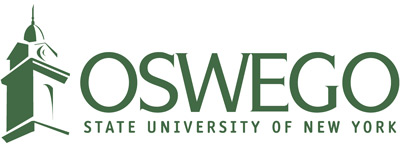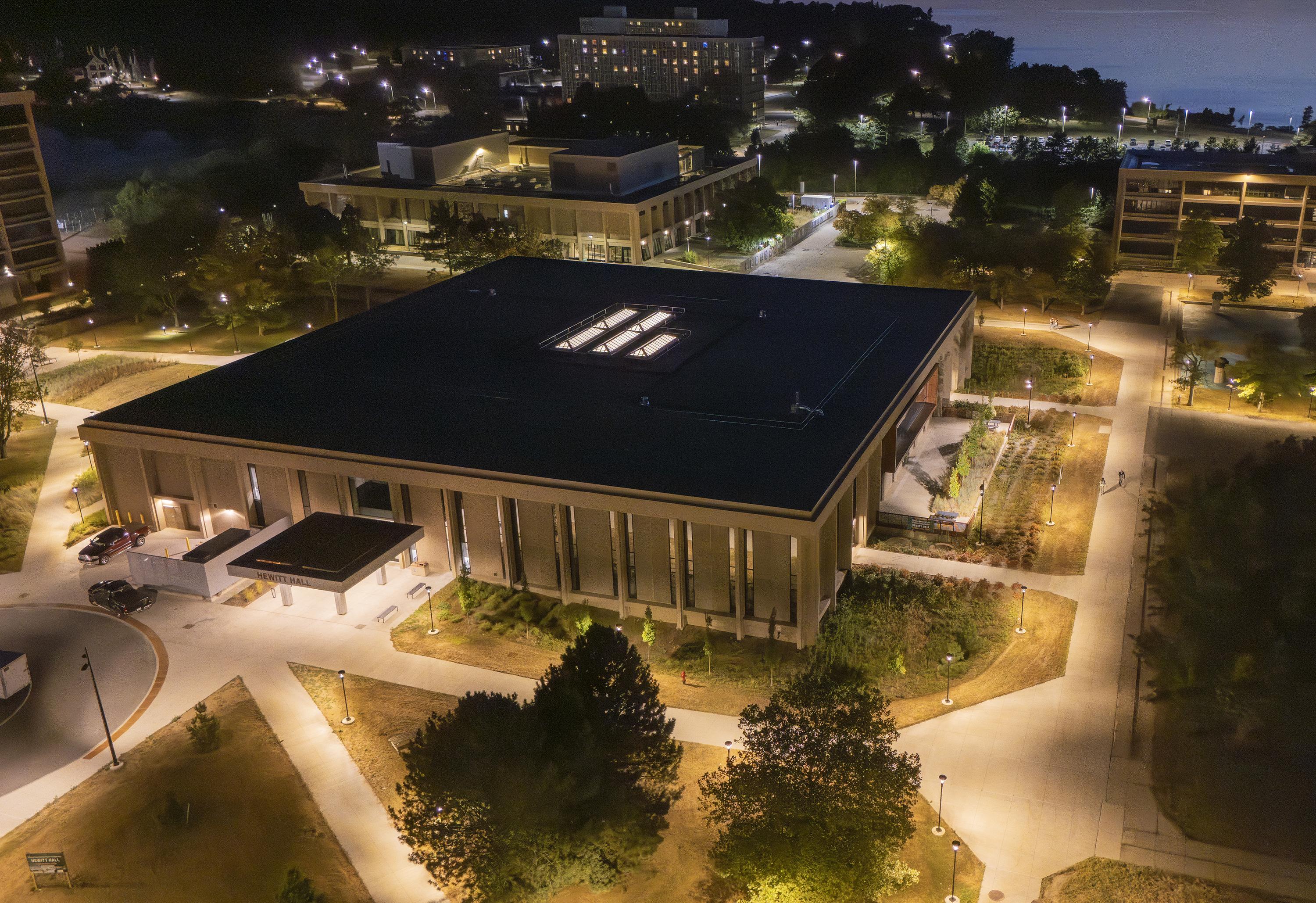With Hewitt Hall’s recent reopening for the fall 2025 semester, most people notice the stunning reinvention of spaces, studios, labs and other facilities. But there’s another remarkable milestone for SUNY Oswego that lives underground.
A massive geothermal well, which will become part of a larger exchange system, marks the university’s continued and growing investment in alternative energy to power the work of current and future generations of Lakers.
SUNY Oswego’s sustainable energy efforts will remain a national leader, thanks to a big boost earlier this year through $30 million in funding from New York State Gov. Kathy Hochul to launch a campus-wide geothermal exchange system.
Supported by funds from the state’s Clean Water, Clean Air and Green Jobs Environmental Bond Act of 2022, the geothermal project represents “a transformative step forward,” said Mitch Fields, associate vice president for facilities services.
“Over the next decade, key academic buildings –- including Mahar Hall, Culkin Hall, Lanigan Lecture Center and Penfield Library –- will undergo major renovations to incorporate geothermal technology,” Fields said.
The projects to transform buildings adjacent to Oswego’s academic quad –- Mahar Hall, traditional home of social sciences; Penfield Library; and Lanigan Hall’s communication studies and large lecture halls –- will change the way Lakers learn, conduct research and interact, while the geothermal investments will provide renewable energy to reduce both costs and environmental impact.
The renovation of Mahar Hall is going out for bid in fall 2025. Construction is slated to include both interior and exterior updates throughout. Programming efforts for the reinvention of Lanigan Hall and the renovation of Penfield Library are in progress. The current timeline is for design to take place during the Mahar renovation, with construction to follow its completion.
“The university is making bold, long-term investments in geothermal energy infrastructure, with nearly $200 million committed across past, current and planned projects,” Fields said. “To date, SUNY Oswego has constructed two geothermal fields serving the Shineman Center and Hewitt Hall, representing a $5 million investment. An additional $20 million will expand the system to the remaining Hewitt Quad buildings.”
Much of the support for additional work comes from the State University Construction Fund.
For Hewitt Hall, the geothermal field involved drilling 90 six-inch bore holes at 500 feet deep each. The related operation required 8.5 miles of drilling to install 18.8 miles of piping.
Above the surface, the geothermal energy supports the $80 million renovation and revitalization of Hewitt Hall to prepare a range of communicators, storytellers and artists for today’s and tomorrow’s technologies, jobs and opportunities.
“Just as Hewitt Hall has become one of the most advanced facilities of its kind in the nation, so too will our geothermal exchange system be at the forefront of higher education sustainability initiatives,” President Peter O. Nwosu said. “Our actions make a promise to our current students to provide the best education possible and to the planet to remain very caring and forward-thinking stewards.”
How it works
Geothermal systems transfer heat both to and from the ground, maintaining a relatively constant year-round temperature. A buried loop of fluid-filled pipes extracts heat from the earth to warm buildings in winter while cooling buildings in the summer by transferring indoor heat back into the ground. The closed-loop system connects to an indoor heat pump and distribution network to deliver conditioned air or water throughout facilities via ducts and radiant heating.
“This approach enables centralized heat exchange with the earth, allowing different buildings to independently draw heat or reject heat as needed,” Fields said. “The network improves overall efficiency through load balancing, reduces infrastructure costs and supports scalable, campus-wide sustainability goals.”
The project to create a geothermal exchange system represents a more efficient operation than the current system of multiple single-building geothermal exchanges. The geothermal exchange system, also known as a ground-source heat pump, supports reduced energy consumption and operating costs for heating, ventilation and air conditioning (HVAC) while minimizing the environmental impact.
These actions support a pair of statewide mandates – 2019’s Executive Order 166, calling for climate action planning while reducing greenhouse gas emissions, and 2022’s Executive Order 22, requiring agencies to adopt sustainability programs while decarbonizing operations.
A decade ago, SUNY Oswego committed to eliminating campus fossil fuel consumption and achieving net carbon neutrality before this funding or wide political support existed, Fields said, with Oswego’s early leadership subsequently reinforced by state-level action and investment.
Climate leadership and innovation
This project and commitment “enhances SUNY Oswego’s appeal to environmentally conscious students who seek a campus that mirrors their values and supports their aspirations,” Fields noted. “It also fosters a culture of engagement and pride among students, faculty and staff. Operationally, the university’s investment in energy efficiency and geothermal systems reduces long-term costs, allowing SUNY Oswego to redirect savings toward academic excellence, student services and campus improvements.”
Campus and state investments in the geothermal field and other initiatives reinforce Oswego’s reputation while enhancing competitiveness in areas including student recruitment, donor engagement and creating public-private partnerships, Fields added. These actions also open the door to additional state and federal funding for a university that is a proven and responsible steward of public resources.
“Perhaps most importantly, SUNY Oswego is preparing the next generation of sustainability leaders by offering students meaningful, hands-on learning opportunities in renewable energy, environmental science and climate-conscious design,” Fields said. “In doing so, the university is not just responding to the climate crisis — it’s shaping the solution.”




